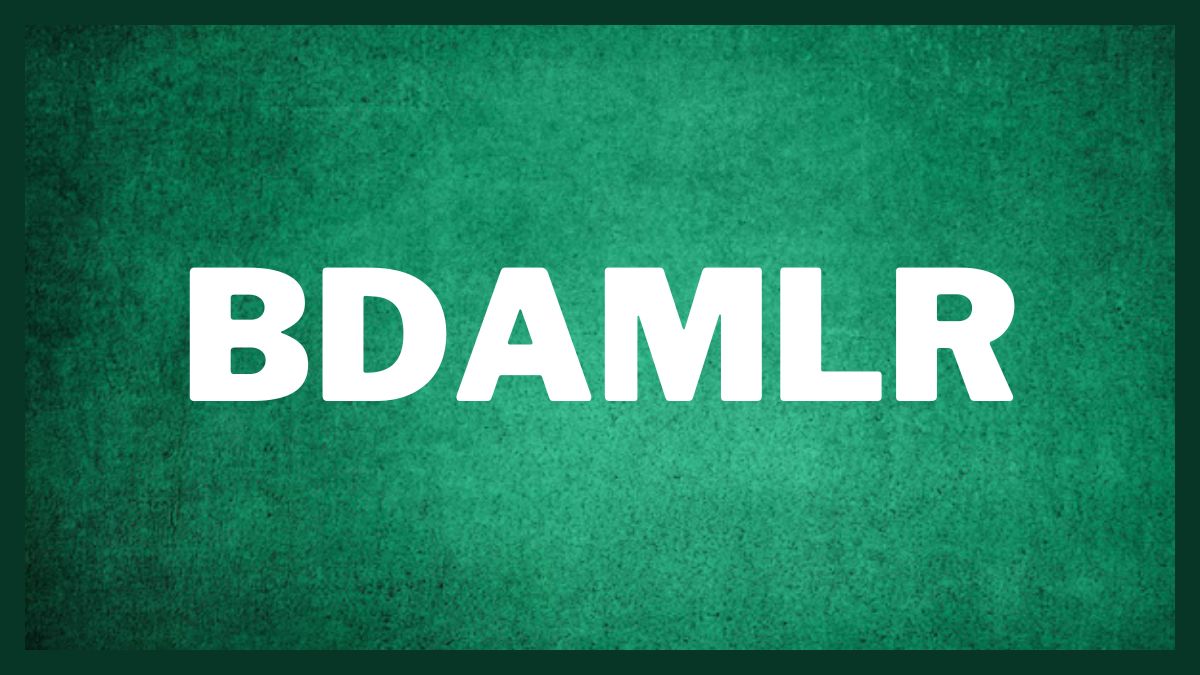The word “Bdamlr” describes a specific group of people who engage in nontraditional relationships based on the principles of consenting power exchange, dominance, and submission. This group is also called the “BDSM and Alternative Lifestyle” community. Bdamlr is about respect in intimate relationships, open communication, and personal independence, which is often twisted or misinterpreted. In this post, we’ll take a look at the nuts and bolts of Bdamlr, including its ideas, practices, and the effects it has on the community.
Table of Contents
ToggleWhat is Bdamlr?
Bdamlr is an acronym for “bondage, discipline, sadism, and masochism,” which may refer to a variety of alternative lifestyle choices, such as BDSM and various types of consensual power dynamics in partnerships. This umbrella word describes a wide range of relationships in which one partner voluntarily assumes a submissive position while the other takes on a more dominating one.
The essence of Bdamlr is fostering an atmosphere where couples may freely and securely explore power relations in a manner that is mutually satisfying and safe. Remember that the foundation of Bdamlr principles are mutual respect, agreed-upon limits, and open communication.
The Core Principles of Bdamlr
In Bdamlr, permission is a crucial component. The character of the procedures and the limits that cannot be exceeded must be agreed upon by all parties participating in any endeavor. Whether Bdamlr is based on BDSM or other relationship dynamics, like as dominance and submission, this premise remains the same.
Respect for one’s own limitations is another fundamental element of Bdamlr. It is common practice for community members to assess their own mental and physical limitations before taking part in any endeavor. If we want to build a community where everyone feels heard and respected, we need to have these talks.
Last but not least, Bdamlr methods include aftercare. The term “aftercare” describes the measures taken and conversations had to guarantee the mental and physical well of everyone concerned after a scene or activity. Offering reassurance, talking about what worked and what didn’t, and providing comfort are all ways to do this.
The Different Roles in Bdamlr
Dominant and submissive are the two main positions in Bdamlr. Relationships call for different kinds of roles, and these roles are malleable. When it comes to making decisions, the dominant spouse dictates terms to the submit. Rather than implying dominance or inferiority, these positions symbolize a mutually respectful exchange of power in which both participants are equally important and worthy of respect.
A small number of participants may also identify as “switchers,” people who, depending on the context or relationship, switch between the submissive and dominant positions. Because of how these positions might change, the Bdamlr community is able to accommodate a wide range of backgrounds and perspectives.
Common Bdamlr Practices
A wide range of activities are available to participants in Bdamlr. Here are a few examples of what is typically done:
-
Bondage: Physically limiting one’s movement with the use of a rope, cuffs, or other object to force the other to submit.
-
Discipline: This kind of relationship maintenance entails establishing ground rules and enforcing penalties for infractions. Reinforcing power dynamics is one function of discipline.
-
Sadism and Masochism: One definition of sadism is taking pleasure in hurting other people, whereas another defines masochism as taking pleasure in being hurt. Usually, these kinds of actions are agreed upon and discussed in advance.
-
Role-playing: Participating in role-playing situations involving power dynamics, such as those involving a master/slave relationship or a teacher/student dynamic, may be enjoyable for some people.
Depending on the people participating, these pursuits may be as easygoing and fun as they are strenuous and demanding. Make sure these practices don’t cross any personal limits or expectations by talking to someone before you do them.
Bdamlr and Communication
The foundation of Bdamlr is communication. Those who follow this way of life place a premium on having frank discussions about their wants, needs, and boundaries. It is impossible to exaggerate the significance of communication, whether one is describing a scenario or establishing relationship goals.
In addition, “safewords” are a means of communication for Bdamlr players when they are in scenes. If the submissive experiences any kind of pain or mental anguish, the dominant partner may use a pre-arranged safeword to tell them to stop.
The Psychological Aspects of Bdamlr
Individuals may have significant psychological impacts when they participate in Bdamlr activities. For many, exploring dominant and submissive roles offers an outlet for emotional release and self-expression. Power exchange can be a way to challenge social norms, confront personal insecurities, or explore deep-seated desires.
Some people find that Bdamlr provides a psychological catharsis. The process of surrendering control or taking on a dominant role can help people explore their own vulnerabilities and strengths. Due to the high degree of physical and emotional exposure involved, it may help strengthen bonds between couples.
However, it’s essential to understand that Bdamlr is not a one-size-fits-all approach. Respecting individual preferences and limits is essential, since not everyone’s psychological reaction to these activities would be the same.
The Role of Aftercare in Bdamlr
An important part of Bdamlr procedures is aftercare. During this time, partners take stock of each other physically and emotionally after engaging in a scene or power exchange activity. Depending on the participants’ demands and the intensity of the activity, aftercare might vary greatly.
For others, aftercare could entail physical contact, such as snuggling, or going over what transpired during the action. A calmer, more contemplative method may appeal to some. Regardless of the unique demands, aftercare helps ensure that everyone involved feels secure, appreciated, and cared for after partaking in stressful events.
Is Bdamlr Right for You?
Whether you should use Bdamlr depends on your own circumstances. Some people find it a liberating and satisfying approach to relationships, while others may discover it doesn’t mesh well with their beliefs or goals.
The best way to tackle Bdamlr is with a blank slate and a firm grasp of your own limitations and requirements. If you want to have a good and rewarding experience, it helps to do your research, be honest with possible partners, and be prepared to educate yourself.
Conclusion
Bdamlr is an inclusive and varied community that delves into the topic of relational power dynamics based on mutual consent. Bdamlr stresses the need of respect, open communication, and permission whether it pertains to BDSM activities or other alternative lifestyle choices. If these dynamics seem good to you, Bdamlr may be a great place to meet new people, develop meaningful relationships, and discover new ways to grow as a person.
Fundamental to Bdamlr is the idea of treating each other with dignity and providing a safe space for people to express their desires in a consensual way. Not everyone will find Bdamlr rewarding, but for those that do, it has the potential to be a life-changing and inspiring experience.
FAQs
Is Bdamlr safe?
Yes, Bdamlr is safe when practiced with clear communication, consent, and respect for personal boundaries. Participants must always negotiate boundaries beforehand and use safewords to ensure safety during activities.
Can someone be both dominant and submissive in Bdamlr?
Yes, some individuals identify as “switches,” meaning they enjoy both dominant and submissive roles depending on the situation or partner.
Do I need to engage in intense practices like BDSM to be part of Bdamlr?
No, Bdamlr includes a wide variety of practices, and not everyone engages in intense BDSM. It’s about finding what works for you and your partner(s) in a consensual and respectful manner.
How do I start exploring Bdamlr?
Start by learning about the practices, communicating openly with potential partners, and setting clear boundaries. It’s essential to be honest about your interests and limits.
What is aftercare, and why is it important in Bdamlr?
Aftercare refers to the period following a scene or power exchange activity when partners provide emotional and physical support to ensure well-being. It’s crucial for maintaining trust and emotional connection.

